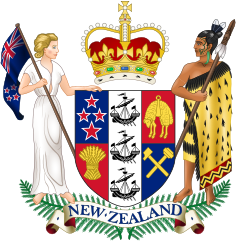This article needs to be updated.(September 2021) |
| Food Act 2014 | |
|---|---|
 | |
| New Zealand Parliament | |
| Assented to | 6 June 2014 |
| Administered by | Ministry for Primary Industries |
| Legislative history | |
| Bill title | Food Bill 160-2 |
| Repeals | |
| Food Act 1981 | |
| Status: Current legislation | |
The Food Act is a New Zealand Act of Parliament passed in 2014. It came into force on 1 March 2016 and progressively replaced the Food Act 1981 for the next three years. [1]
Contents
- Background
- Codex Alimentarius
- New Zealand’s Strategic Objectives in Codex
- Food Bill gateway to Codex
- History
- Progress
- Food legislation in other common law countries
- United States
- Canada
- Related New Zealand Legislation
- Trans Pacific Partnership Agreement (TPPA)
- Hazardous Substances and New Organisms Act 1996
- Natural Health Products Bill 324-1
- Consultation with the public
- Criticism and Public Concern
- Food Bill Issues
- Codex Alimentarius Controversy
- Petition to oppose Food Bill
- References
- External links
It was introduced as the Food Bill 160-2 on 26 May 2010 to make some fundamental changes [2] to New Zealand's domestic food regulatory regime. Significantly, for an export led economic recovery for New Zealand, the domestic food regulatory regime is the platform for exports. [3] The New Zealand domestic standard is used as the basis for negotiating equivalence arrangements with trading partners. This minimizes the excessive importing country requirements that may be imposed but which do not go to food safety. If passed into law and fully implemented, it would replace the Food Act 1981 and the Food Hygiene Regulations 1974. Food Bill will also make consequential amendments to the Animal Products Act 1999 and the Wine Act 2003 to improve the interface of regulatory processes across food sectors.

